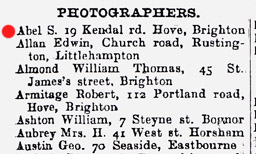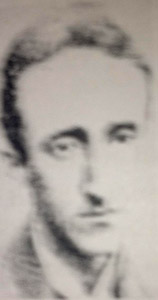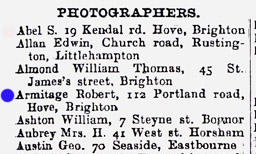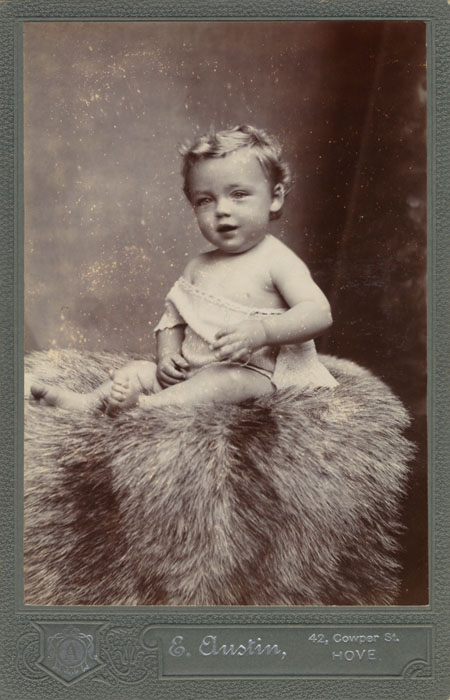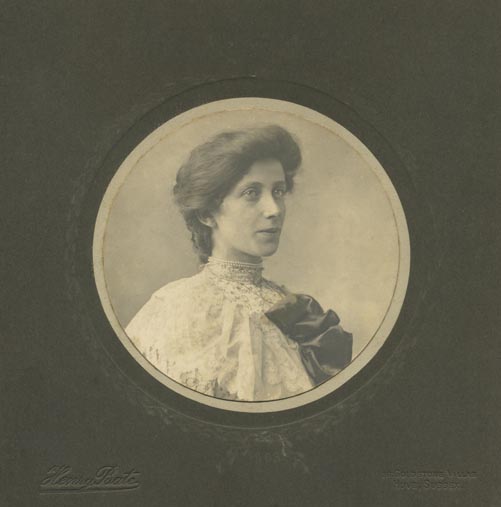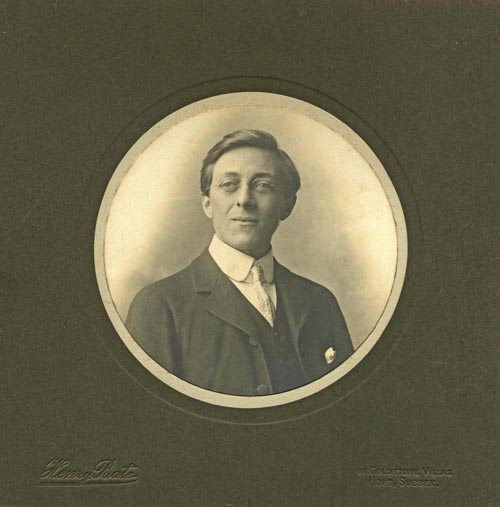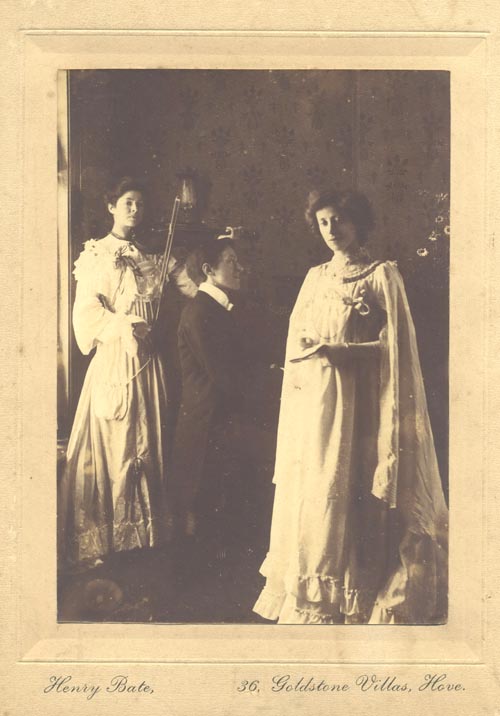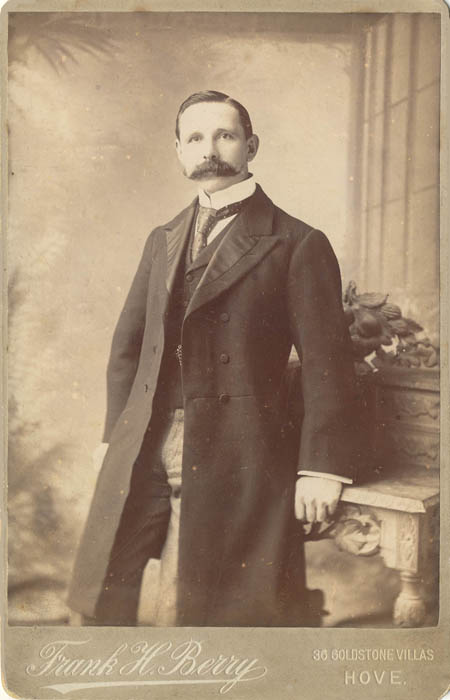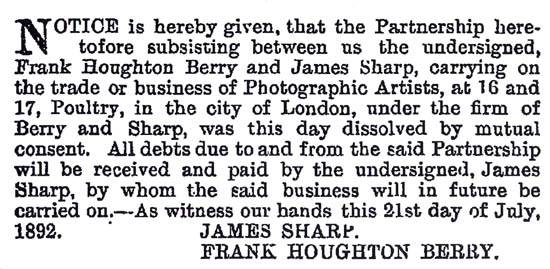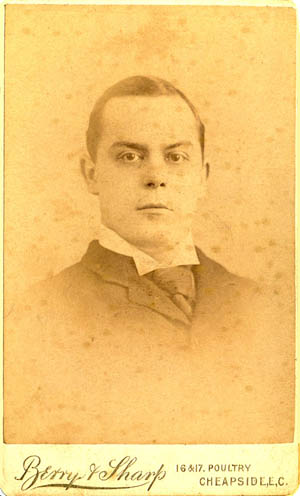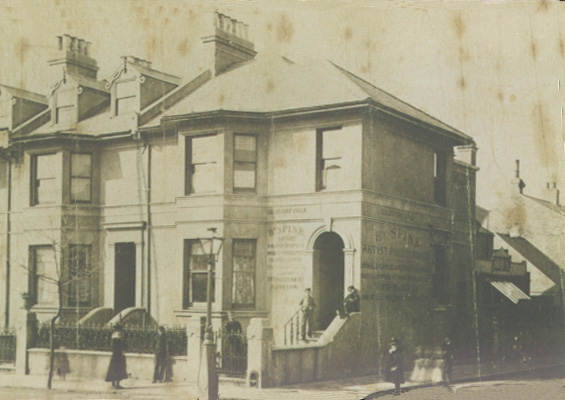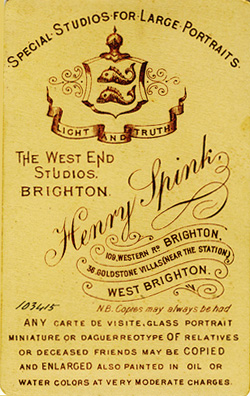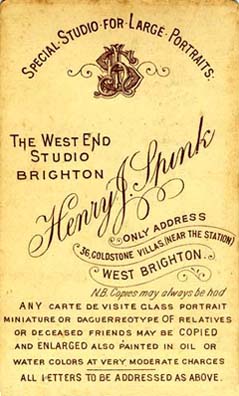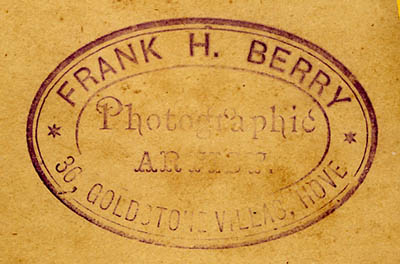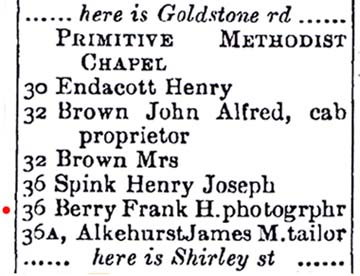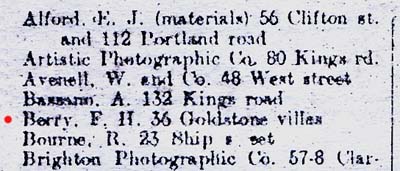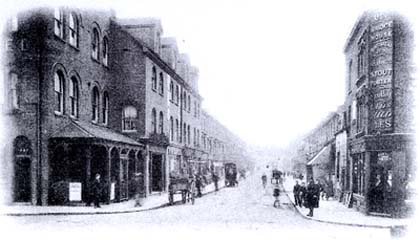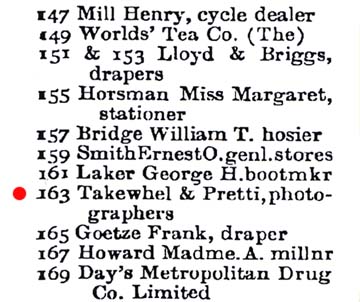| Henry Bate was born in Fitzroy Square,
Marylebone, London, in 1863, the youngest
son of Elizabeth Stapleton and Samuel Bate, an engineer,
tool-maker and
gunsmith from Devon. Samuel Bate, Henry's father, had been born in
1831 in the Devonshire parish of Werrington (now in the county of
Cornwall). In 1855, Samuel Bate married Elizabeth Stapleton
(born c1832, Week St Mary, Poundstock, Devon/Cornwall), This union produced
at least 4 children: Thomas Stapleton Bate (born 1856, Woodley,
Devon), William James Bate (born 1858, Holsworthy, Devon),
Elizabeth Ann Bate (born 1859, Holsworthy, Devon) and Henry Bate
(born 1863, Marylebone, London). By
1871, Samuel Bate and his family were living in the Essex village of
Heybridge on the outskirts of Maldon. The 1871 census records
Samuel Bate as a 39 year old "Engineer, Tools Maker" at
No.9 Stock Terrace, Heybridge. Samuel Bate's eldest son, 14 year old
Thomas S. Bate was also working as an 'engineer tool maker',
but his three youngest children, including 7 year old Henry Bate,
were still at school. When the census was taken 10 years later, Samuel
Bate and his family were residing in the Essex town of Maldon,
where he had established a gun-making business in the market town's High
Street. In 1881, seventeen year old Henry Bate was employed as an
assistant in his father's gunsmith's shop in Maldon's High Street.
Henry Bate followed his father into the gun-making business and when Samuel Bate
died in 1888, at the age of 56, Henry Bate
took over his father's workshop in the Essex town of Maldon.
At the
time of the 1891 census, Henry Bate
was recorded as a "Gun & Bicycle Maker" at 11 Market Hill, Maldon,
Essex. Two years later, Henry Bate
married Sarah Annie Barbara Chappell (born 1871,Edmonton, Middlesex),
the daughter of Mrs Sarah Chappell of Edmonton. [ The marriage
of Henry Bate
and Sarah Annie Chappell was registered in the Essex district of
Epping during the 3rd Quarter of 1893]. Henry Bate's
wife Sarah (known as "Annie") gave birth to two children - Elsie
Gladys Bate (born 1894, Maldon, Essex) and Aubrey Claude Bate
(born 1896, Maldon, Essex) before she moved down to Hove in Sussex with her
husband around 1900.
In 1900, Henry Bate
entered into a business partnership with the photographer
John Weaver Innes (1862-1928) who had for the last year or so been
operating a photographic portrait studio at 36 Goldstone
Villas, Hove, Sussex.
Photographic portraits produced at the
Goldstone Villas studio during the first few months of 1901 carried the
trade plate of Innes & Bate, but, by early Spring, the partnership
between
John Weaver Innes and Henry Bate
had come to an end. A notice
in The London Gazette published on
31st May 1901 announced that the firm of Innes & Bate, photographers
at Hove, had been dissolved by mutual consent on 25th March 1901. The
photographic business at 36 Goldstone
Villas, Hove was retained by Henry Bate, who remained in business
as a photographer at the Goldstone
Villas studio
until the outbreak of the First World War.
When the census was taken on 31st March 1901,
Henry Bate did not give his occupation as "Photographer" as one would
expect. Instead, Henry Bate informed the census enumerator that he
earned his living by "Manufacturing conjuring tricks". Although
Henry Bate was at this time a professional photographer, taking
photographic portraits at his studio in Goldstone Villas, he had also gained
a
reputation as an ingenious inventor of magic tricks and conjuring apparatus.
It is reported that his fascination with conjuring and magic tricks began
when he was still at school and that he spent many hours in his father's
gun-making workshop manufacturing magician's 'props'. In his twenties,
Henry Bate was earning a living making guns and bicycles and he used his
mechanical skills to devise and build "magical properties" for illusionists
and magicians and to produce magic tricks for toy shops. Apparently, in his
spare time, Henry Bate performed magic tricks and provided
entertainment as a conjuror at private parties. In 1902, Henry Bate
met the famous magician and illusionist David Devant - real name
David Wighton - (1868-1941). David Devant employed Henry Bate
as a "magician's mechanic", commissioning him to devise and manufacture his
illusionist props. In his autobiography, My Magic Life, David
Devant recalled his first encounter with Henry Bate at a
performance in Brighton in 1902:
| "I was fortunate in meeting Mr
Bate ...He came up on the stage one day to examine a box, and ...we
got into conversation. I asked him to come round to see me afterwards,
and I found he was an experienced maker of tricks and had been working
for years through toy-shops. He was the very man I wanted - a clever
mechanic who understood the work....The first thing of importance that
Bate made for me was the 'Magic Kettle', which became one of my most
celebrated illusions".
FROM My Magic Life by
David Devant |
Today, Henry Bate is more well-known
for the magical apparatus and conjuring props he made for the magician and
illusionist David Devant than for the photographic portraits he
produced at his Goldstone Villas studio. Henry Bate's name appears in books
on the history of magic acts and in articles on conjuring tricks produced
during his lifetime. In his book "This is Magic: Secrets of the
Conjurer's Craft", William Thomas Pritchard refers to "Henry Bate of
Brighton (sic), that famous builder of magical properties". In 1924,
The Strand Magazine published an article entitled "How Conjuring
Tricks are Invented", which featured "an interview with Mr. Henry
Bate". The interviewer explained that "although the name of Mr.
Henry Bate is unknown to the general public, he is one of the most active
members of that exclusive body known as the Inner Magic Circle". Edwin
A. Dawes, an authority on the history of magic, described Henry Bate
as "a leading 'back-room' man of magic".
Between 1902 and 1914, Henry Bate
operated a photographic studio at 36 Goldstone Villas, Hove, while
managing to manufacture magic apparatus for David Devant, the leading
magician and illusionist of his day. (David Devant was also the first
President of the Magic Circle). In 1911, Henry Bate declared on the
census form that he was a "Photographer" working on his "own account"
at his home address of 36 Goldstone Villas, Hove. Sharing his home in
Goldstone Villas was his 39 year old wife "Annie" (Mrs Sarah Annie
Bate), his two children - Edith, a 16 year old "Civil Service
Student" and Aubrey, a 14 year old school boy - Elizabeth
Bate, his older unmarried sister, and a 26 year old servant Marion Webb,
who is described as a "Mother's help".
I have found very few photographic portraits
taken by Henry Bate at his Goldstone Villas studio. Fortunately, a
family archive has at least 3 photographs taken by Henry Bate of
Hove. Alfred Walter Fisher (1874-1947) was a "Professor of
Music", church organist and pianist who performed musical concerts in
Hove during the early decades of the 20th Century. On 4th August 1901,
Alfred Walter Fisher married Margaret Evans Binstead
(1876-1955), a young woman who shared Alfred's musical interests. After his
marriage, Alfred Walter Fisher returned to Hove, where he established The Hove Academy of Music. Around
1905, Alfred Walter Fisher and his wife Mrs Margaret Fisher
both had their portraits taken at Henry Bate's photographic studio at 36 Goldstone Villas, Hove.
During the same period, Henry Bate photographed Margaret and
Alfred Fisher giving a musical performance, with Alfred at the piano and
Margaret in the role of vocalist. Standing behind Alfred Fisher in the
photograph is a young woman playing the violin. The female violinist could
possibly be Ethel Binstead (born 1872, Worthing), Margaret's elder
sister, who for a period of time lived with Alfred and Margaret Fisher.
Henry Bate is last
recorded as a professional photographer in 1913. When the 1915 edition of
Kelly's Directory of Sussex was compiled, Henry Bate is still
listed as the householder at 36 Goldstone Villas, Hove in the street
directory, but he is no longer listed as a professional photographer at
this address in the commercial section of the 1915 directory and does not
reappear in subsequent editions.
Henry Bate
died in February or March 1944 at the age of 80. Contemporary newspapers and
journals reported that Henry Bate had died at his home in Hove, yet
his death was registered in the West Sussex district of Worthing
during the First Quarter of 1944.
|
|
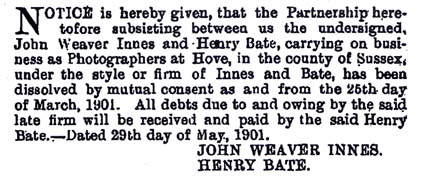 |
|
[ABOVE] The announcement of the dissolution
of the business partnership between
John Weaver Innes and Henry Bate "carrying on business
as Photographers at Hove, in the county of Sussex, under the style or firm
of Innes and Bate", as published in The London Gazette on
31st May 1901.
John Weaver Innes had been joined by photographer Henry Bate
(born 1863, London) at 36 Goldstone Villas,
Hove, at the end of 1900. The partnership of Innes & Bates was dissolved
by mutual consent on 25th March 1901. The studio at 36 Goldstone Villas,
Hove, remained in the hands of Henry Bate until about 1914. |
|
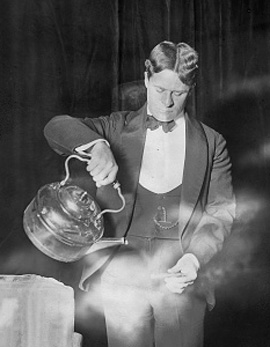
|

|
|
[ABOVE] The famous magician David Devant
(1868-1941) lighting a cigar by pouring hot water over it with his
'Magic Kettle'. (Photographed at The Palace Theatre, London around
1904). The "Magical Kettle" was an illusionist prop made
by Henry Bate, Hove photographer and 'manufacturer of
conjuring tricks'. Henry Bate made a number of magical devices for
Devant, including "The Henry Bate Coin Wand" and the "Bottomless Tub". |
[ABOVE] A poster advertising "David
Devant and his Mystic Kettle". The "Mystic Kettle" was made by
Henry Bate (1863-1944) for the famous magician and illusionist
David Devant. In his autobiography, Devant remarked: "With this
innocent-looking receptacle I could supply my audience with any drink
they wished, from water to crème de menthe". Bate manufactured
many 'magic props' for Devant. |
|

|
[ABOVE] The magician and illusionist David Devant
(1868-1941), on the left, performing his "Giant's Breakfast" act .
The man with the moustache standing on the right holding the picture
frame could be Henry Bate (1863-1944), the 'magician's mechanic'
who made most of David Devant's apparatus.
In his autobiography, My Magic Life,
David Devant mentions that Henry Bate bore a
physical resemblance to Nevil Maskelyne (1863-1924), a British
stage magician and inventor. Mr Maskelyne was around the same age as
Henry Bate and also sported a bushy moustache. |
|
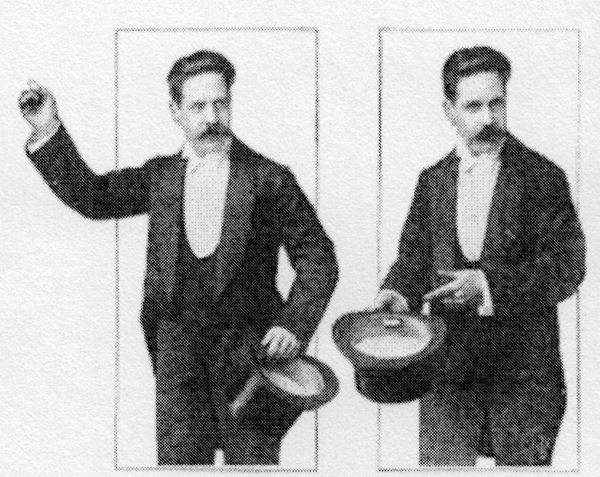
|
| Are these portraits
of the conjuror and photographer Henry Bate? In December 1904,
The London Magazine published an illustrated article entitled "Conjuring
at Home: Everyone his own Professor of Legerdemain". The author of
the article acknowledged the contribution of the Hove photographer Henry Bate
with this footnote: "We are indebted to the courtesy of Mr. Henry
Bate of Hove, Sussex, who has had many years' experience as a
practical conjurer and manufacturer of conjurers' requisites, for
facilities for obtaining the information and photographs contained
in this article". |

[ABOVE] Trade plate of
Henry Bate, photographer of 36 Goldstone Villas, Hove.
|

